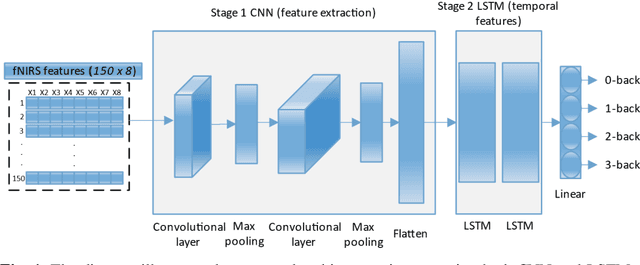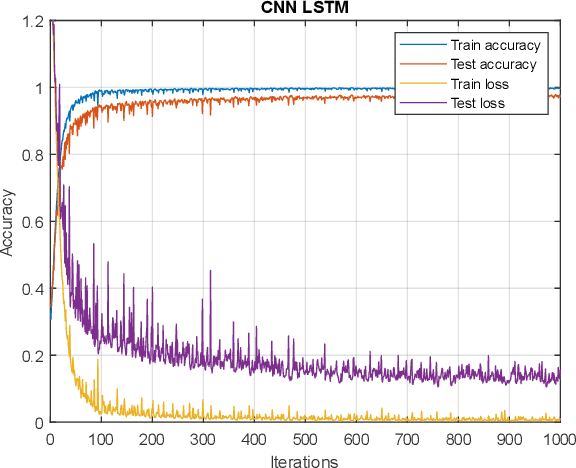Mehshan Ahmed Khan
Enhancing Cognitive Workload Classification Using Integrated LSTM Layers and CNNs for fNIRS Data Analysis
Jul 22, 2024



Abstract:Functional near-infrared spectroscopy (fNIRS) is employed as a non-invasive method to monitor functional brain activation by capturing changes in the concentrations of oxygenated haemoglobin (HbO) and deoxygenated haemo-globin (HbR). Various machine learning classification techniques have been utilized to distinguish cognitive states. However, conventional machine learning methods, although simpler to implement, undergo a complex pre-processing phase before network training and demonstrate reduced accuracy due to inadequate data preprocessing. Additionally, previous research in cog-nitive load assessment using fNIRS has predominantly focused on differ-sizeentiating between two levels of mental workload. These studies mainly aim to classify low and high levels of cognitive load or distinguish between easy and difficult tasks. To address these limitations associated with conven-tional methods, this paper conducts a comprehensive exploration of the im-pact of Long Short-Term Memory (LSTM) layers on the effectiveness of Convolutional Neural Networks (CNNs) within deep learning models. This is to address the issues related to spatial features overfitting and lack of tem-poral dependencies in CNN in the previous studies. By integrating LSTM layers, the model can capture temporal dependencies in the fNIRS data, al-lowing for a more comprehensive understanding of cognitive states. The primary objective is to assess how incorporating LSTM layers enhances the performance of CNNs. The experimental results presented in this paper demonstrate that the integration of LSTM layers with Convolutional layers results in an increase in the accuracy of deep learning models from 97.40% to 97.92%.
A Novel CNN-LSTM-based Approach to Predict Urban Expansion
Mar 02, 2021Abstract:Time-series remote sensing data offer a rich source of information that can be used in a wide range of applications, from monitoring changes in land cover to surveilling crops, coastal changes, flood risk assessment, and urban sprawl. This paper addresses the challenge of using time-series satellite images to predict urban expansion. Building upon previous work, we propose a novel two-step approach based on semantic image segmentation in order to predict urban expansion. The first step aims to extract information about urban regions at different time scales and prepare them for use in the training step. The second step combines Convolutional Neural Networks (CNN) with Long Short Term Memory (LSTM) methods in order to learn temporal features and thus predict urban expansion. In this paper, experimental results are conducted using several multi-date satellite images representing the three largest cities in Saudi Arabia, namely: Riyadh, Jeddah, and Dammam. We empirically evaluated our proposed technique, and examined its results by comparing them with state-of-the-art approaches. Following this evaluation, we determined that our results reveal improved performance for the new-coupled CNN-LSTM approach, particularly in terms of assessments based on Mean Square Error, Root Mean Square Error, Peak Signal to Noise Ratio, Structural Similarity Index, and overall classification accuracy.
 Add to Chrome
Add to Chrome Add to Firefox
Add to Firefox Add to Edge
Add to Edge